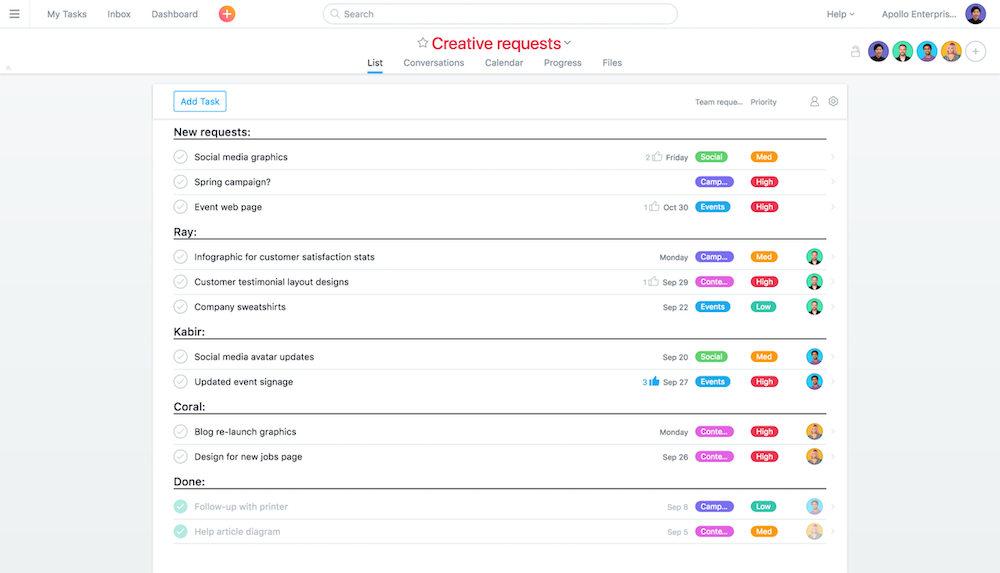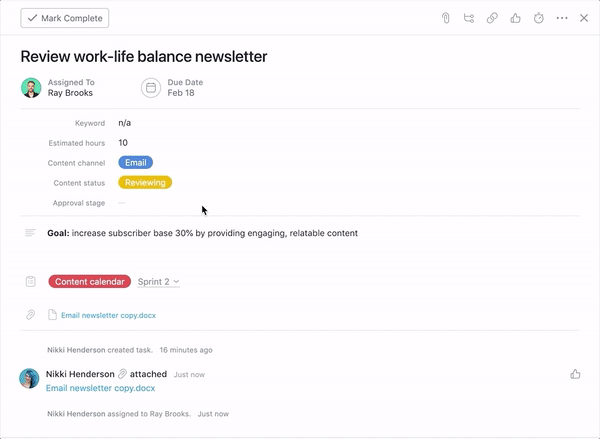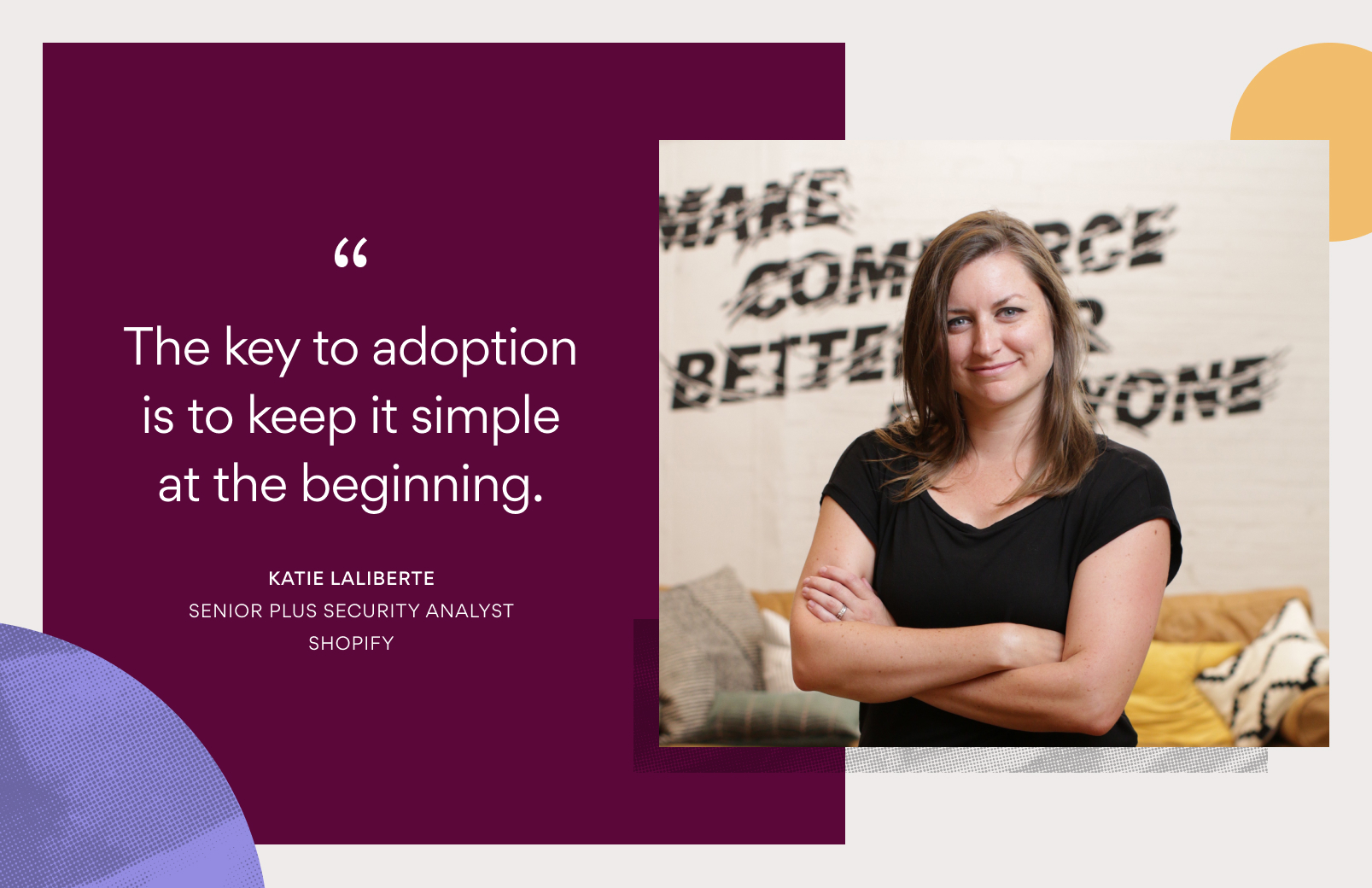A pixel-perfect process: how to manage creative requests effectively

For many marketing teams, creative production—the process of writing, designing, and producing all the landing pages, emails, and videos that customers see—can feel like a tangled web. Requests come in from what seems like every direction via email, Slack, or passing hallway conversations. Important information, like project specs, timelines, and creative mandatories, are often incomplete, if not missing entirely. And when it comes to managing feedback and approvals on creative work, the picture only gets fuzzier.
Without a clear and efficient process for creative project management, you’re left with a chaotic work environment that slows down your team and makes it harder for your copywriters and designers to do what they do best: creating standout work that delights and engages your audience. Fortunately, there is a way to manage and track creative production across all your marketing campaigns, events, and launches without letting things fall through the cracks. Here are four ideas for making your creative production process pixel perfect so your team members can work together effortlessly.
1. Centralize your creative requests
When creative requests are coming in from every direction, keeping track of everything gets tricky, fast. That’s because you end up spending a good chunk of time consolidating information to create a single source of truth instead of delivering on the creative work itself. What if you could start each day with a clear picture of all the design work being requested by other teams and divvy up work accordingly by priority, due date, and project scope?
You can get there by centralizing your creative production process. (Our creative team uses Asana, naturally.) By designating one place for housing all incoming creative requests, you only need to check one place for all the work that needs to be completed—instead of fielding email, Slack, and in-person syncs to wrap your head around everything.
Asana Tip: Quickly set up a project for managing creative requests, from intake to delivery, with our template.

By managing all your requests in an Asana project, stakeholders know where to look to move forward on creative work: Marketing managers can request creative assets for their digital campaigns, events, and blog content. Designers and copywriters know where to look for new project assignments or status updates. And most importantly, creative leaders and producers have a single, clear view of all the work happening on their team at any given time.
2. Collect key details up front
To ensure that your designers and copywriters have enough information to get started on creative work, it’s important to have a brief in place. Solid creative or project briefs can be a creative team’s best friend, and creating a standard version helps everyone get—and stay—on the same page throughout the production process.
Depending on their specific needs, every team’s creative brief will have some slight variations. At a minimum, a creative brief should clearly define the marketing goals that the work accomplishes, set expectations around scope and deadlines, and clarify who the reviewers and approvers are. Additionally, your creative brief should include any design specs, such as delivery format, sizing, and any other required elements. By collecting all these details up front—at the point of request intake—your team can get started on creative production sooner.
Asana Tip: You can further streamline your process by using a form in Asana for your creative brief. When someone submits a form, a task is automatically created in your Creative requests project.

3. Communicate your process
If you establish a creative production process, and it’s never communicated, was it ever a process at all? Philosophical musings aside, internally communicating how your creative team handles requests is an important aspect of nailing the creative production process. After all, if your teammates don’t know where they’re supposed to submit creative requests or how the creative project management process works, they’ll continue to use ad hoc methods like email and drive-by desk asks.
One way to make sure team members follow your process is to make it clear that any creative requests submitted through alternative means won’t be prioritized. It’s also important to clearly communicate what information—goals, specs, examples—is expected with every request.
Asana Tip: Invite cross-functional teammates to your creative requests project in Asana and post a conversation to let them know how your process works.
4. Streamline reviews and approvals
So you’ve prioritized and assigned every creative request, your designers and copywriters are chipping away at all the deliverables, and that’s your production process, right? Not quite. Unless you nail a piece of creative with the first drafts, producing quality assets involves iterative rounds of stakeholder feedback. Unfortunately, this is also the part of the creative production process that can turn into a bottleneck.
If you’re managing feedback from multiple stakeholders, tracking which assets are ready for review or what changes are high-priority (vs. nice to have) becomes a headache—fast. Fortunately, Asana takes the pain out of the process by making it easy to track the approval stage of every deliverable in your creative requests project using custom fields. And with proofing, it’s easier than ever to get actionable feedback on visual assets.

Asana Tip: Add the Asana-created “approval stage” custom field to your creative requests project so that stakeholders automatically receive a notification when something is ready for review.
Editor’s note: We’ve made some improvements to our approvals functionality since we published this post. Check out the Asana Guide for the latest updates.
Iterate and polish
As you start to roll out your creative production process in Asana, get input on how it’s working for your teammates and iterate on it as necessary. Fine tune as you encounter friction points and your team’s needs evolve. And once your process is in a good place, you can replicate it for other work requests happening, like web development, or swag. No need to redesign the wheel every time.
Looking for a way to wrangle your creative requests? See how Asana can help today.

